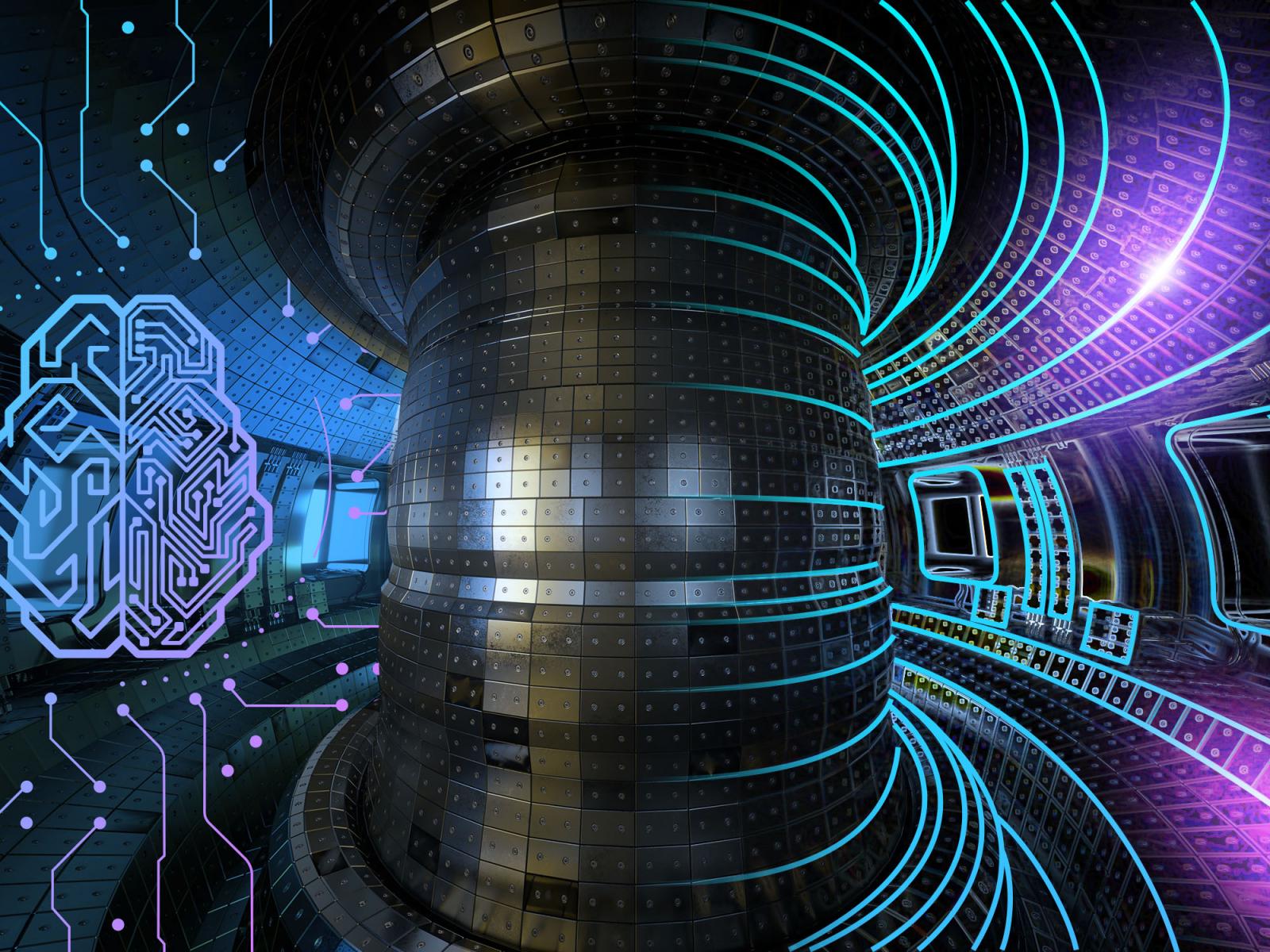Using AI to Detect Defects in Fusion Reactor Materials
New approach aims to speed up bringing new alloys into fusion reactors

Researchers developed a defect detection tool that combines electron microscopy data with AI techniques to identify defects rapidly and accurately in alloyed materials.
(Image by Nathan Johnson | Pacific Northwest National Laboratory)
The Science
Developing structural materials for use in fusion reactors represents a key challenge for the advancement of fusion energy. This harsh environment subjects materials to intense neutron irradiation and thermo-mechanical stresses. Materials used in the first wall and blanket structures can undergo swelling, embrittlement, and degradation due to accumulation of hydrogen and helium. Material characterization and testing are essential for designing and developing robust materials that can withstand the challenge. This requires creating tools to identify the atomic-level defects created by radiation and how they impact the operational efficiency, safety, and lifetime of the materials. However, determining the extent of radiation damage, particularly in new and unproven materials, remains difficult and expensive. Pacific Northwest National Laboratory (PNNL) materials scientists used artificial intelligence (AI) computer vision models to create a powerful new method that automates microscopic defect detection in alloys. This tool helps researchers develop a better understanding of the effects of irradiation damage on materials performance by providing statistically meaningful information on the defects in a material.
The Impact
Researchers developed a defect detection tool, known as DefectSegNet, based on the AI Convolutional Neural Network (CNN) model. It combines electron microscopy data with AI techniques to identify defects rapidly and accurately in alloyed materials. This novel approach shows the utility of merging microscopy and AI with an eye toward standardizing how defects are identified and analyzed. This could speed up the implementation of new alloys into proposed fusion reactors, as whether a material is structurally robust or prone to failure could be determined in earlier studies.
Summary
To identify promising materials for use in fusion reactors, scientists must identify, characterize, and quantify the defects caused by neutron irradiation in any alloy of interest. This laborious process requires individual analysis of each material by a researcher, creating a bottleneck to producing the statistically meaningful quantification needed to design new alloys.
Researchers met this challenge by combining expertise in both microscopy and AI computer vision. They used their expertise to improve the contrast issues in electron micrographs to remove image artifacts that obscured the defects of interest, a problem that previously limited AI applications, to establish an advanced imaging mode with better contrast, clarity, and feature homogeneity. After acquiring suitable data in this mode, they developed and trained DefectSegNet, a new hybrid deep CNN architecture. The trained AI is faster, produces more reproducible results, and is two orders of magnitude more efficient than a human expert. This is a clear demonstration of the utility of deep learning AI networks for defect analysis and applications to nuclear materials development.
PNNL Contact
Danny J. Edwards, Pacific Northwest National Laboratory, dan.edwards@pnnl.gov
Funding
The work was supported by the U.S. Department of Energy Office of Science, Fusion Energy Sciences program, and the Office of Nuclear Energy. The University of Connecticut High Performance Computing facility and the Pacific Northwest National Laboratory Research Computing Program provided the CNN model training in this research.
Published: November 16, 2020
Roberts G., et al., “Deep Learning for Semantic Segmentation of Defects in Advanced STEM Images of Steels.” Scientific Reports 9, 12744 (2019) [DOI: 10.1038/s41598-019-49105-0]
Zhu Y., et al., “Towards bend-contour-free dislocation imaging via diffraction contrast STEM.” Ultramicroscopy 193, 12 (2018) [DOI: 10.1016/j.ultramic.2018.06.001]